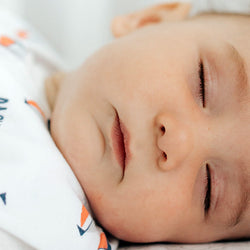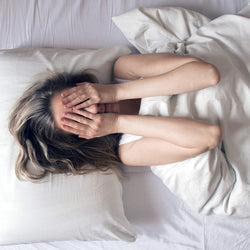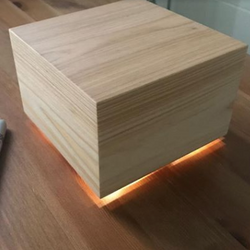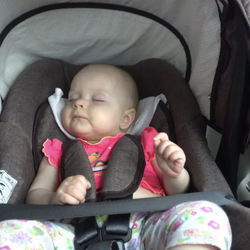5 Tips for Crib Safety
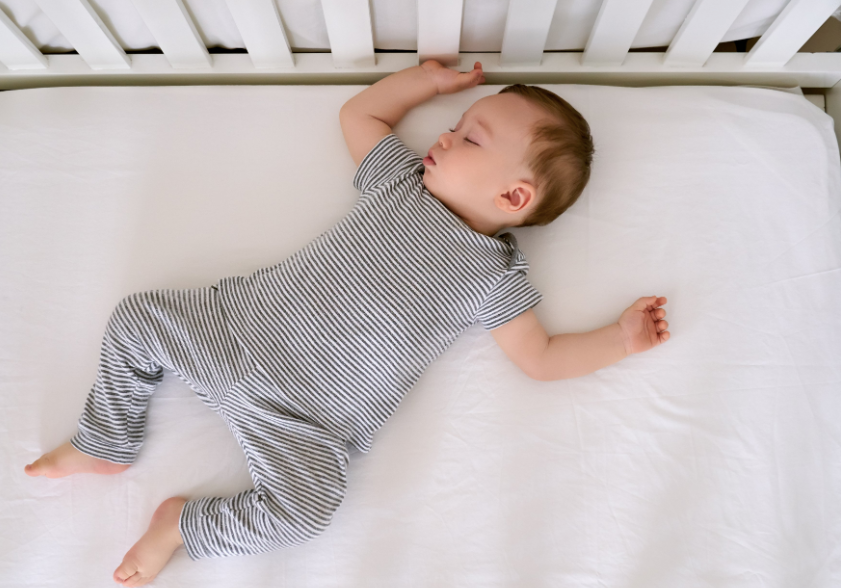
by Jess Wartinger
Mar 26, 2019
It seems as though safety recommendations are constantly changing. From the newest car seat laws to the preferred age for beginning solid foods, there’s a lot to keep tabs on.
Crib safety is no exception.
Within the past few years, new safety standards for cribs have been released along with updated recommendations made by the American Academy of Pediatrics (AAP).
If you’re a new parent, grandparent, or caregiver, you’ll want check out the what constitutes best practices for crib safety. After all, a safe baby is everyone’s goal.
Is Your Crib Safe?
Many cribs of the past included a side that dropped down, allowing for an easier way to reach baby. While functional in nature, poor design (along with ongoing wear-and-tear) meant these cribs became a safety hazard, allowing for baby entrapment and, in some cases, suffocation.
Beginning in 2011, new crib safety standards prevented both the manufacturing and the resale of these drop-side cribs. For the money-saving mama, these regulations include garage sales. A crib is one thing to never buy secondhand.
Newly-manufactured cribs now go through more rigorous safety testing as well as requiring stronger hardware that can hold up with continual use.
In addition to making sure you have a new crib with fixed sides, the AAP recommends your crib have the following:
● A firm mattress that fits the crib without any gaps around the edge or corners.
● A fitted sheet that wraps snugly around the mattress, without extra material.
● A solid head and footboard to reduce the risk of entrapment.
● A placement away from hanging pictures, window blinds, or electrical outlets.
Is Your Baby Sleeping Safely?
While crib safety relies on using a safe crib, the majority of the discussion surrounds best practices when putting baby to bed.
Check out these tips to make sure your baby is as safe as possible when sleeping:
5 Tips for Crib Safety
Crib Safety Tip #1: Back is Best
Baby should be put to sleep on his back until he is a year old, although once he learns to roll from back to front, it’s okay to let him continue sleeping on his stomach.
Crib Safety Tip #2: Swaddle Securely
In the early months, swaddling baby will help him fall into a deeper sleep. Make sure any extra swaddle material is tucked securely under baby. Once baby begins to roll, you’ll need to break him from the swaddle.
Crib Safety Tip #3: Goodbye Plush
Baby’s crib should be free from all bumpers, blankets, pillows, and toys. Extra items, especially those that are padded, increase baby’s risk of sleep-related death. While it may be cute to pick out the perfect crib bumper to match your nursery, this is one item to skip.
Does your little one use a pacifier at night? If you’re worried about pacifiers falling out between the crib bars, try using a mesh crib liner; it gives the convenience of keeping a pacifier inside the crib while securely attaching to baby’s crib and is made of a breathable material in case baby is resting alongside it.
Are you afraid your baby might be chilly without a blanket? Making sure baby’s room is heated properly, dressing baby warmly if needed, and making use of sleep sacks for colder weather are all good alternatives to putting baby to bed with a blanket.
Crib Safety Tip #4: Lower is Better
Most cribs have adjustable mattress heights. The highest level is the easiest for parents to reach in and get baby, but as baby learns to move, you’ll want to reevaluate if you need to lower baby’s crib mattress.
Baby’s head shouldn’t be peering over the top of the crib rail if she’s on all fours. Once baby can stand, you’ll want to place the mattress at the lowest level to prevent baby from climbing out.
Crib Safety Tip #5: Create a United Front
Perhaps the most important element of crib safety is that you’re practicing it consistently. Make sure you’re communicating clearly with your spouse, grandparents, and caregivers about how baby sleeps and best practices regarding crib safety.
When you’re confident that everyone is on the same page about crib safety, you can rest easier. And as a new parent, couldn't you use a little more rest and spend a little less time worrying about how your little one is sleeping?
Article Continues Below Advertisement
Make sure you also read our post on how to set up your crib for safe sleep too.
Jess Wartinger
Jess Wartinger resides in rural New York with her husband and five children. Formerly an early elementary teacher, Jess currently spends her time loving her kids and holding down the fort at home.



